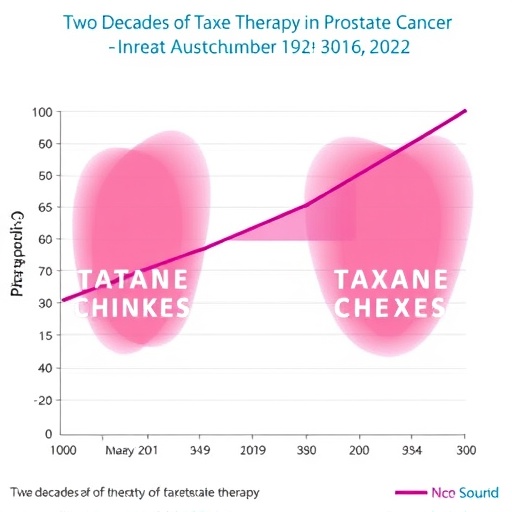In the United States, lower back pain afflicts nearly 30 percent of adults within any three-month span, underscoring its position as the most prevalent musculoskeletal complaint. As a global concern, back pain ranks among the foremost causes of disability, disrupting the lives of millions through chronic discomfort, reduced mobility, lost productivity, and often leading patients toward invasive treatments. The complexity of spinal mechanics and the individual variations in lumbar anatomy create significant challenges in accurately diagnosing and personalizing treatment for this widespread condition.
Confronting these challenges, an interdisciplinary team of researchers from Florida Atlantic University’s College of Engineering and Computer Science and the Marcus Neuroscience Institute at Boca Raton Regional Hospital have pioneered the integration of artificial intelligence with biomechanics to revolutionize lumbar spine modeling. This innovative fusion of technology and clinical insight harnesses automated finite element analysis to create highly detailed, patient-specific simulations of the lumbar spine. These models meticulously replicate how the lower back moves, where mechanical loads accumulate, and which anatomical features contribute to pain or functional deficits.
Traditional lumbar spine modeling techniques are notoriously labor-intensive, requiring manual segmentation of medical images, mesh generation, and biomechanical simulation setup that can extend over a day or more. This time-consuming methodology not only slows clinical decision-making but also introduces variability contingent upon the operator’s expertise. The newly developed pipeline eliminates these barriers by automating nearly all stages of model creation, democratizing access to complex simulations and enhancing consistency across cases.
The breakthrough involves seamlessly combining cutting-edge deep learning frameworks such as nnUNet and MONAI with advanced biomechanical simulators like GIBBON and FEBio. Using standard computed tomography (CT) and magnetic resonance imaging (MRI) scans, the artificial intelligence algorithms rapidly segment essential spinal structures—vertebrae, intervertebral discs, ligaments—and refine them into smooth, anatomically precise three-dimensional surfaces. This detailed reconstruction incorporates cartilage geometry and attachment points of ligaments based on normative biomechanical data, allowing the finite element models to authentically reproduce the interplay of spinal components under various mechanical loads.
Published in the prestigious journal World Neurosurgery, the study reveals an astonishing 97.9% reduction in model preparation time, shrinking from over 24 hours with conventional methods to just under 31 minutes, without sacrificing biomechanical accuracy. The virtual spines generated by this pipeline respond dynamically to simulated movements such as bending and twisting, exhibiting realistic disc deformation, ligament tension, and posterior spinal stresses. These features are critical for understanding the mechanical environment that contributes to degeneration and pain, as well as evaluating the potential impact of surgical interventions.
Clinically, this automation opens new horizons for preoperative planning and personalized medicine. Surgeons can now rapidly generate patient-specific models that forecast mechanical complications and optimize implant designs, mitigating risks and improving surgical outcomes. The system’s high throughput and reliability also allow for early detection of degenerative changes, facilitating prompt therapeutic measures before significant deterioration occurs.
“It is the automatic transformation of routine medical imaging into accurate, individualized lumbar spine models that distinguishes our approach,” says Dr. Maohua Lin, the project’s corresponding author and research assistant professor in FAU’s Department of Biomedical Engineering. He emphasizes that bypassing the conventional multistep workflow dramatically accelerates model generation, empowering clinicians with timely data to inform their decision-making processes.
The research team’s methodology harnesses the power of advanced AI for segmentation, mapping, and model refinement. Identification of bones and discs is automated, ligament attachment sites are inferred using established biomechanical patterns, and cartilage is shaped accordingly. The finite element simulations then explore spinal response to physiological motions, elucidating how mechanical stresses manifest and propagate through the lumbar region in ways previously measurable only through invasive or indirect methods.
Neurosurgeon Dr. Frank D. Vrionis, also a corresponding author and chief of neurosurgery at the Marcus Neuroscience Institute, highlights the tool’s significance in the surgical realm. “This pipeline fast-tracks the creation of detailed, patient-specific lumbar spine models that forecast implant performance and reduce operative complications. It enhances both speed and reliability compared to traditional modeling, translating into better care for patients.”
The team’s accomplishments build on prior publications involving AI-enhanced biomechanical modeling from the same groups, demonstrating a consistent trajectory of innovation that bridges computational science with clinical neurosurgery. Their collaborative work exemplifies how interdisciplinary approaches can surmount longstanding obstacles in health care.
The study’s financing reflects broad institutional support, including backing from the U.S. National Science Foundation, Boca Raton Regional Hospital, the Helene and Stephen Weicholz Foundation, and several FAU research entities. This robust foundation underscores the importance and potential impact of automating complex biomechanical analyses on improving patient care.
Looking ahead, this fully automated lumbar spine modeling system heralds a paradigm shift in spinal diagnostics and treatment planning, promising to transform not only clinical workflows but also research into spinal pathologies. By effectively merging artificial intelligence and biomechanics, the team at Florida Atlantic University and Baptist Health has catalyzed a new era in personalized spinal medicine, where precision, speed, and reliability converge to benefit millions suffering from debilitating lower back pain.
Subject of Research: People
Article Title: Automated Finite Element Modeling of the Lumbar Spine: A Biomechanical and Clinical Approach to Spinal Load Distribution and Stress Analysis
News Publication Date: 1-Sep-2025
Web References:
FAU College of Engineering and Computer Science: https://www.fau.edu/engineering/
Marcus Neuroscience Institute, Boca Raton Regional Hospital: https://baptisthealth.net/locations/hospitals/boca-raton-regional-hospital
World Neurosurgery article: https://www.sciencedirect.com/science/article/pii/S1878875025005923
References:
Lin M., Vrionis F.D., Ahmadi M., Zhang X., Tang Y., Engeberg E., Hashemi J., “Automated Finite Element Modeling of the Lumbar Spine: A Biomechanical and Clinical Approach to Spinal Load Distribution and Stress Analysis,” World Neurosurgery, 2025. DOI: 10.1016/j.wneu.2025.124236
Image Credits: Florida Atlantic University
Keywords: Health and medicine, Pain, Back pain, Artificial intelligence, Computer modeling, Biomechanics, Modeling, Three dimensional modeling, Neurosurgery, Technology, Medical technology, Diagnostic accuracy, Surgery, Magnetic resonance imaging, Computerized axial tomography, Health care, Human health




